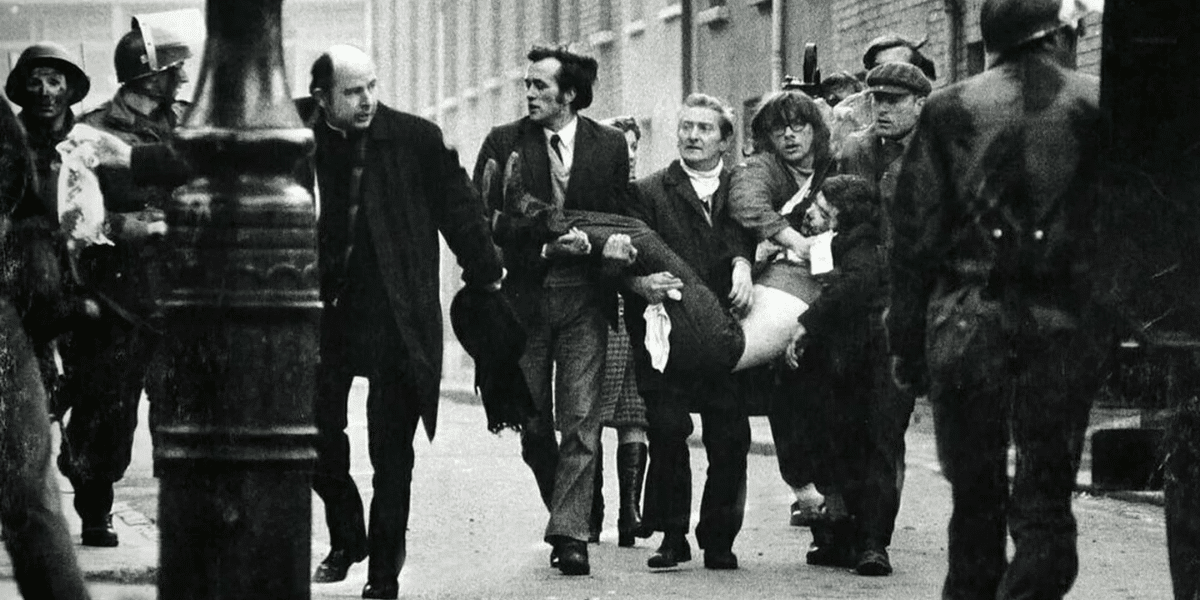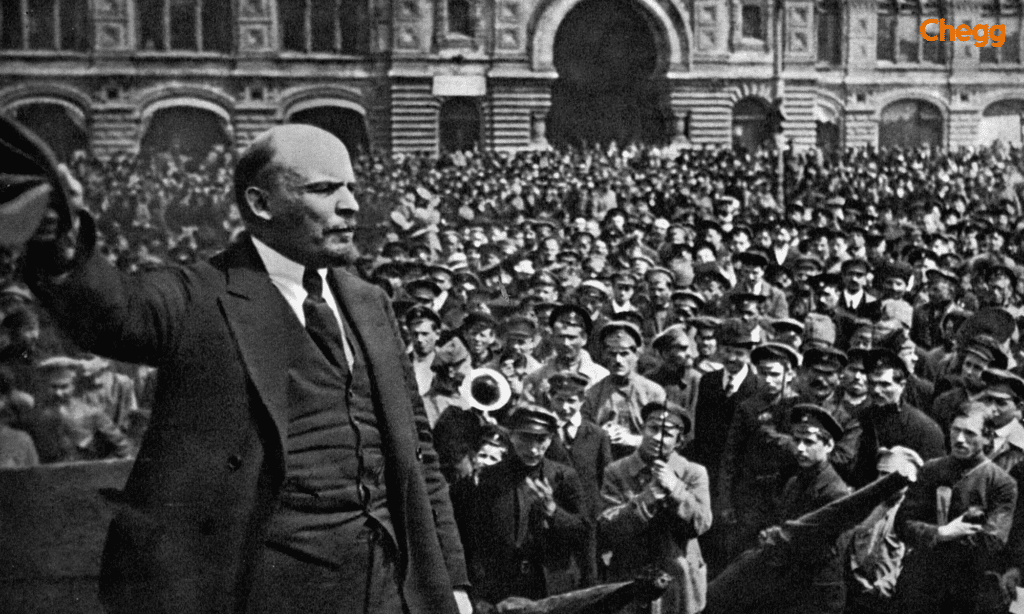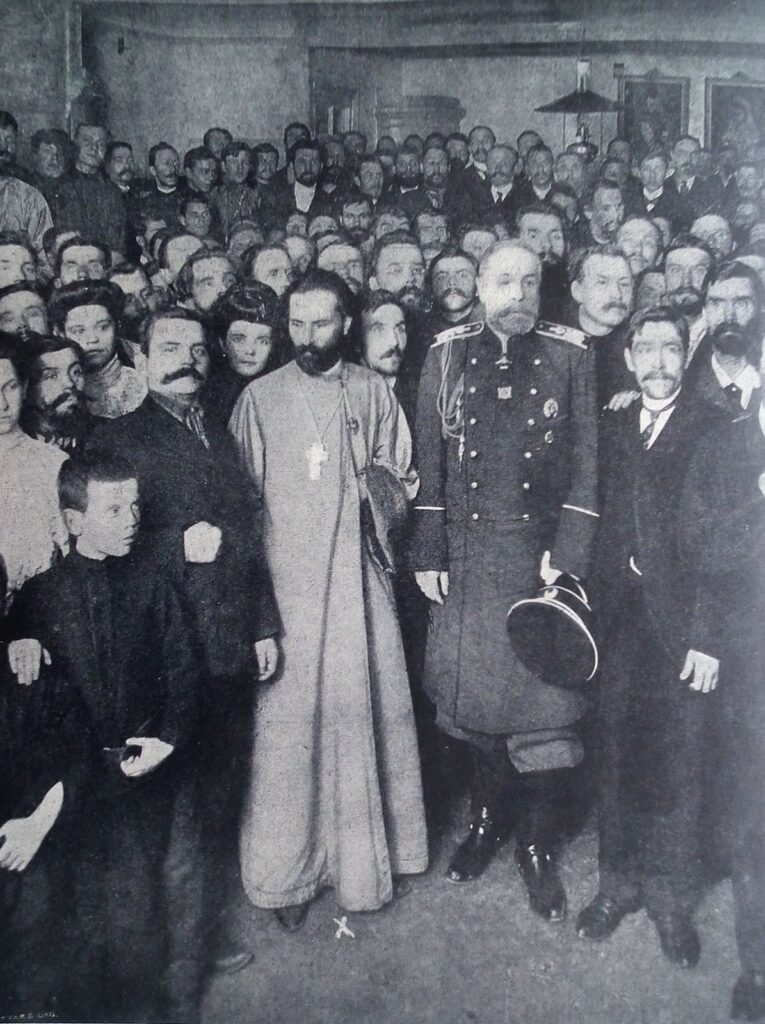
Quick Summary
Table of Contents

“Bloody Sunday” refers to the tragic events of January 22, 1905. When Imperial Guard troops opened fire on peaceful protesters marching to present a petition to Tsar Nicholas II, this massacre ignited widespread unrest and became a turning point in the lead-up to the Russian Revolution of 1905.

After Tsar Alexander II of Russia abolished the serfs in 1861, a new peasant working class arose in the cities. This led to strikes and protests. “Bloody Sunday” is a series of events that took place on January 22, 1905, in Russia.
Read More:- Khilafat Movement – A Grapple for Islamic Harmony
The Russian Revolution in 1917 was one of the most significant political events of the 20th century. It ended both the Romanov dynasty and Imperial Russian rule. The main reasons for the first Russian Revolution were the tsarist autocracy’s failed economic policies, which resulted in food shortages and hyperinflation. The public was utterly dissatisfied with Czar Nicholas II. The Bolsheviks, under the leadership of Marxist revolutionary Vladimir Lenin, overthrew the czarist tradition during the Russian Revolution.


On January 22, 1905, what started as a peaceful rally led by Father Gapon, a Russian Orthodox priest, quickly turned into a massacre that would leave a lasting mark on Russian history. The protest, organized by the “Assembly of the Russian Factory and Mill Workers of St. Petersburg,” saw around 200,000 workers march to the Winter Palace in St. Petersburg to present a petition to Tsar Nicholas II. They were demanding better working conditions, fairer wages, and an end to the harsh labor policies that had fueled unrest.
Fueled by a faltering economy, the ongoing war with Japan, and the unbearable labor conditions, the workers, along with their families, sang hymns as they marched peacefully toward the palace. However, when the unarmed protesters reached the Winter Palace, the Imperial Guard, fearing the large crowd, opened fire on them, killing many. This tragic event, known as Bloody Sunday, sparked widespread outrage and set the stage for the 1905 Russian Revolution.
Key Points:
Read More:- Juvenile Justice Act: Comprehensive Overview

At a different point in Russian history, the large-scale murder of dissenting citizens may have intimidated the majority into compliant silence. In this case, the power of the tsarist regime gradually decreased for some time. The people’s admiration and love for the Tsar, already declining beforehand, experienced a sudden downfall. On the whole, an event called ‘Bloody Sunday’ set off a series of widespread strikes, peasant disturbances, killings, and political movements, known collectively as the 1905 Revolution.
In the late 19th century, Russia’s tsarist government revived the economy, leading to substantial industrial expansion. However, there were no measures to defend the rights of employees. In the 20th century, Russia had about three million industrial workers who received extremely low wages. Employers subjected them to atrocious working conditions, including long workdays and no leave for festivals or sickness.
The lack of workplace hygiene and safety led to widespread illnesses, injuries, and accidents. Workers were immediately terminated if unable to work due to such incidents, receiving no leave or compensation. Employers frequently imposed random fines for various offenses. The majority of employees lived in poor, confined housing offered by the industry that lacked essential utilities.
This situation set the stage for Father Gapon’s pivotal role in advocating for workers’ rights. After spending time with poverty-stricken workers, Gapon began championing their cause. By the end of 1904, he had become a key figure in the unrest at the Putilov steel factory in St. Petersburg. When four workers were unjustly dismissed, the outrage spread quickly, with workers from other factories joining strikes and demanding better conditions. This unrest ultimately escalated into what is Bloody Sunday, a tragic event that would ignite widespread revolutionary movements across Russia. Gapon’s involvement marked a turning point in the fight for workers’ rights and the future of the Russian Empire.
Over 100 people were killed and 300 were injured during the mass shootings. The Bloody Sunday tragedy set off a chain of events that was eventually referred to as the 1905 Revolution.
The immediate aftermath of Bloody Sunday was a time of chaos and confusion. The violent response of the Imperial Guard to the peaceful protest shocked the public. News of the massacre spread quickly, leading to widespread strikes and protests across the country. Critics worldwide condemned Tsar Nicholas II’s government for its handling of the event. The public’s faith in the Tsarist regime deeply wavered, setting the stage for the Russian Revolution.
Bloody Sunday, a pivotal moment in the fight for civil rights, offers valuable lessons for students studying history in Class 9. What is Bloody Sunday? It refers to the tragic events of January 22, 1905, when unarmed workers in St. Petersburg marched peacefully to petition Tsar Nicholas II, only to be met with gunfire from Imperial troops.
What is Bloody Sunday? It is a stark reminder of how peaceful protests can lead to violent repression, highlighting the struggles of the working class under autocratic regimes. What is Bloody Sunday? It serves as a case study of how such events can catalyze larger revolutionary movements and bring about significant social and political changes.
Key Topics to Cover:
The Russian Revolution stands as a pivotal moment in history, fundamentally reshaping Russia’s socio-political landscape and having an impact globally. Within this broader revolution, the events of “Bloody Sunday” in 1905 stand as a crucial turning point. What is Bloody Sunday? It refers to the tragic day when unarmed protestors, marching peacefully to present their demands to Tsar Nicholas II,
On this fateful day, peaceful protestors led by Father Georgy Gapon marched towards the Winter Palace in St. Petersburg. Their aim? To petition Tsar Nicholas II for better working conditions and civil liberties. What is Bloody Sunday? It was a tragic event when Imperial troops opened fire on the unarmed crowd, resulting in hundreds of deaths and injuries.
What is Bloody Sunday? It was a moment that exposed the brutality of the Tsarist regime and shattered the people’s trust in Nicholas II. What is Bloody Sunday? It became a turning point in Russian history, sparking widespread unrest and fueling revolutionary movements.
The “What is Bloody Sunday” refers to the brutal massacre that sparked outrage across Russia. Workers went on strike in major cities, peasants revolted, and military mutinies erupted. The event shattered faith in the Tsar’s leadership and ignited a revolutionary fervor that simmered beneath the surface for years.
Facing a potential collapse of his regime, Tsar Nicholas II issued the October Manifesto in a desperate attempt to appease the public. This document established the Duma, a legislative assembly, and promised civil liberties. However, the limitations placed on the Duma and Nicholas’ subsequent dissolution of it in 1907 revealed the Tsar’s commitment to retaining autocratic control.
The failed promises of the October Manifesto only fueled the flames of revolution. Disillusionment with the Tsar deepened, leading to a radicalization of political movements. While the 1905 revolution ultimately failed to overthrow the Tsar, it planted the seeds for the more successful uprisings of 1917.
There are key differences between the 1905 and 1917 revolutions:
The brutal events of Bloody Sunday had a profound and lasting impact on Russia:
Bloody Sunday marked a pivotal moment in Russian history, shattering the illusion of a benevolent Tsar and setting the stage for a period of immense social and political upheaval.
On a fateful day in 1905, a peaceful procession of workers led by Father Gapon approached the Winter Palace in St. Petersburg, Russia. They aimed to deliver a petition to the Tsar outlining their grievances and hardships. However, tragedy struck.
Instead of a peaceful resolution, the procession was met with brutal violence. Tsarist police and cossacks opened fire on the unarmed crowd, killing over 100 workers and injuring hundreds more. This horrific event, known as Bloody Sunday, became a turning point in Russian history.
What is Bloody Sunday? It refers to the events of January 22, 1905, when unarmed workers marching to present a petition to Tsar Nicholas II were shot by imperial forces.
What is Bloody Sunday? It exposed the cruelty of the Tsarist regime, shattered trust in the Tsar, and sparked revolutionary movements.
What is Bloody Sunday? It remains a symbol of oppression and a key moment in Russia’s fight against autocracy.
The unprovoked massacre sparked outrage and ignited a wave of unrest across the country. Workers went on strike, and revolutionary sentiment grew, leading to a series of events known as the 1905 Revolution. Bloody Sunday exposed the deep chasm between the Tsarist regime and the working class, ultimately contributing to the downfall of the Tsarist government.
Bloody Sunday stands out as a pivotal moment in Russian history, sparking the Revolution of 1905 and igniting widespread political and social unrest across the Russian Empire. This period was marked by military mutinies, labor strikes, and peasant uprisings. Although the 1905 Revolution did not end Tsarist rule, it set the stage for further upheaval, culminating in the two Russian Revolutions of 1917 that ultimately toppled the Tsarist regime and paved the way for the rise of the Soviet Union.
Read More:-
On January 22, 1905, in St. Petersburg, Russia, soldiers of the Imperial Guard fired upon unarmed protesters marching to present a petition to Tsar Nicholas II, an event now known as Bloody Sunday.
Father Georgy Gapon, an Orthodox priest, led the St. Petersburg Factory Workers and organized the march on the Winter Palace that ended in the Bloody Sunday massacre.
Tsar Nicholas II was the Emperor of Russia at the time of Bloody Sunday. Although he was not present at the Winter Palace during the massacre, he was widely blamed for the tragedy.
Bloody Sunday ignited the 1905 Revolution, fueling public outrage and eroding support for the Tsarist regime, ultimately setting the stage for the 1917 Russian Revolution.
The government responded with a violent crackdown on protesters and strikers. This response only fueled more unrest and dissatisfaction with the Tsarist regime.
In the car park of Rossville Flats, someone shot Jack Duddy (17) dead. The gunfire wounded four others: Margaret Deery (37), Michael Bridge (25), Michael Bradley (22), and Patrick McDaid (24).
The Bloody Sunday date in Russia is January 22, 1905, when imperial troops fired on peaceful protesters in St. Petersburg, triggering the 1905 Revolution.

Authored by, Muskan Gupta
Content Curator
Muskan believes learning should feel like an adventure, not a chore. With years of experience in content creation and strategy, she specializes in educational topics, online earning opportunities, and general knowledge. She enjoys sharing her insights through blogs and articles that inform and inspire her readers. When she’s not writing, you’ll likely find her hopping between bookstores and bakeries, always in search of her next favorite read or treat.
Editor's Recommendations
Chegg India does not ask for money to offer any opportunity with the company. We request you to be vigilant before sharing your personal and financial information with any third party. Beware of fraudulent activities claiming affiliation with our company and promising monetary rewards or benefits. Chegg India shall not be responsible for any losses resulting from such activities.
Chegg India does not ask for money to offer any opportunity with the company. We request you to be vigilant before sharing your personal and financial information with any third party. Beware of fraudulent activities claiming affiliation with our company and promising monetary rewards or benefits. Chegg India shall not be responsible for any losses resulting from such activities.